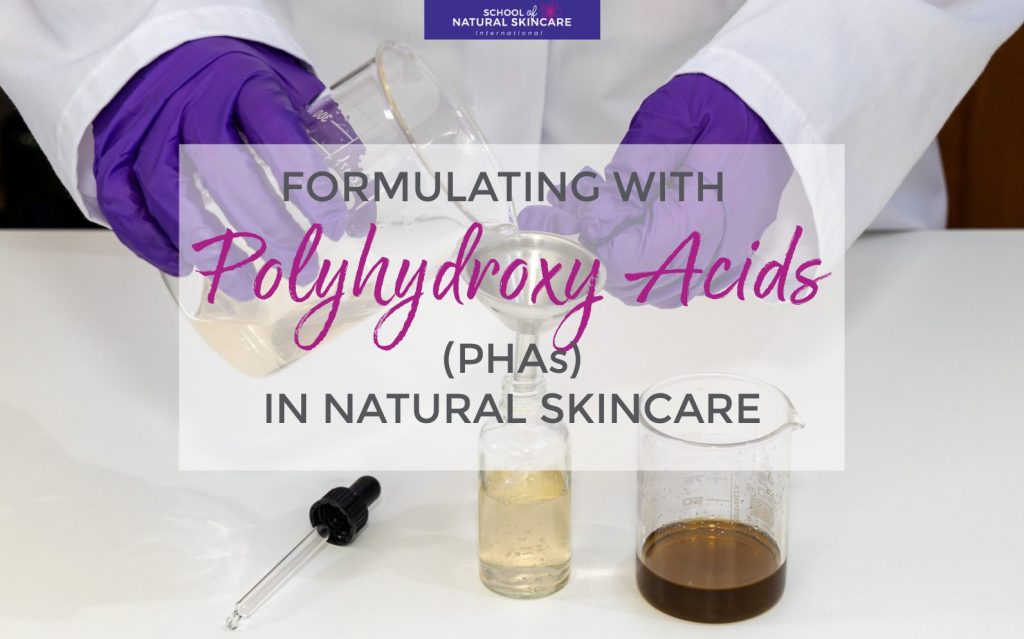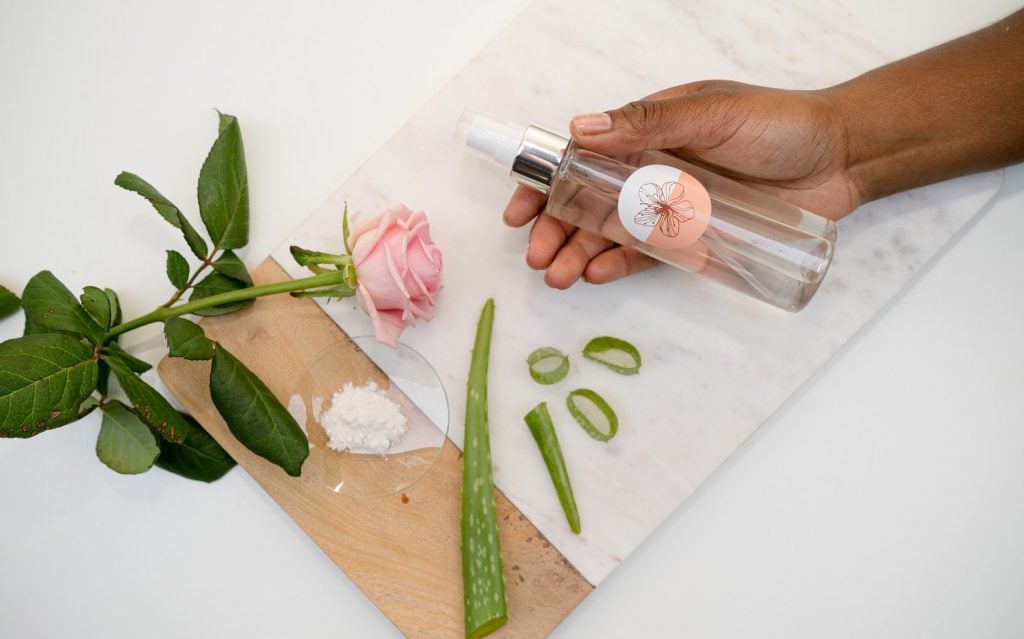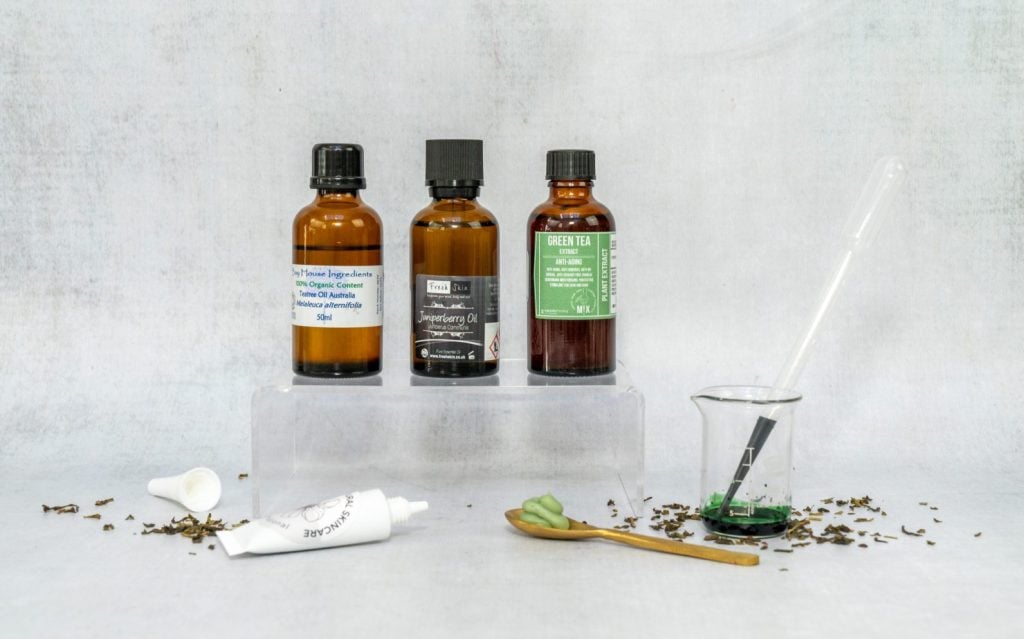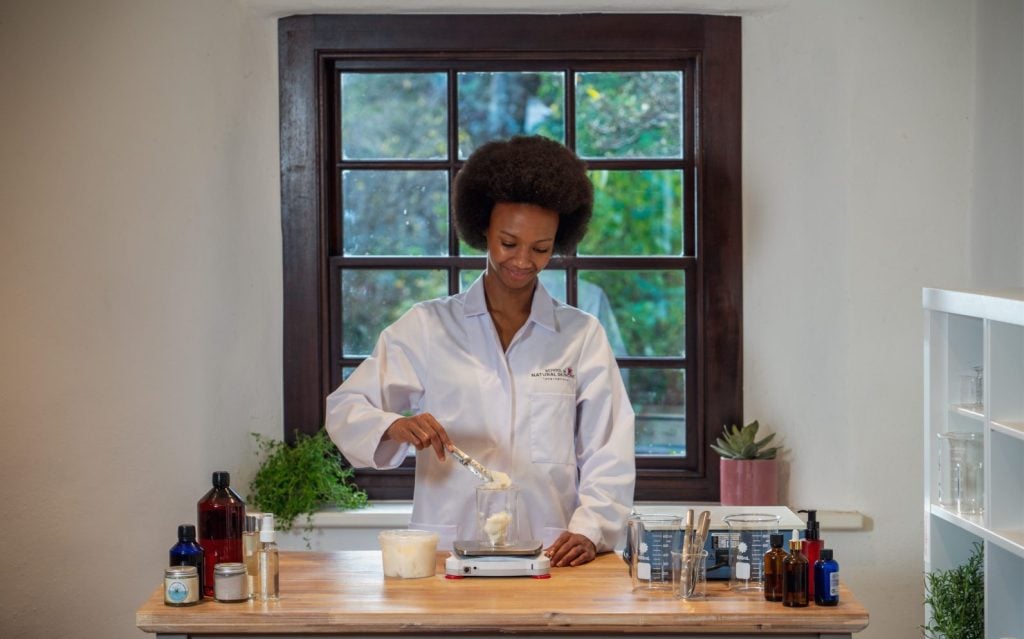Excitingly, there is a cutting-edge ingredient on the skincare market that’s causing quite a stir. You may have heard the buzzwords ‘polyhydroxy acids’ or ‘PHAs’. PHAs are chemical exfoliants that are much more gentler than AHAs or BHAs, are very hydrating and are suitable for even sensitive skin.
What’s even better is that polyhydroxy acid (PHA) is a totally natural skincare ingredient. Hurrah! The most prominent PHA, called gluconolactone, is a COSMOS-approved ingredient, which is sourced from corn production.
For those of you interested in the benefits of hydroxy acids but concerned about the sensitivity that AHAs and BHAs can cause, you may have just discovered your new favorite skincare ingredient.
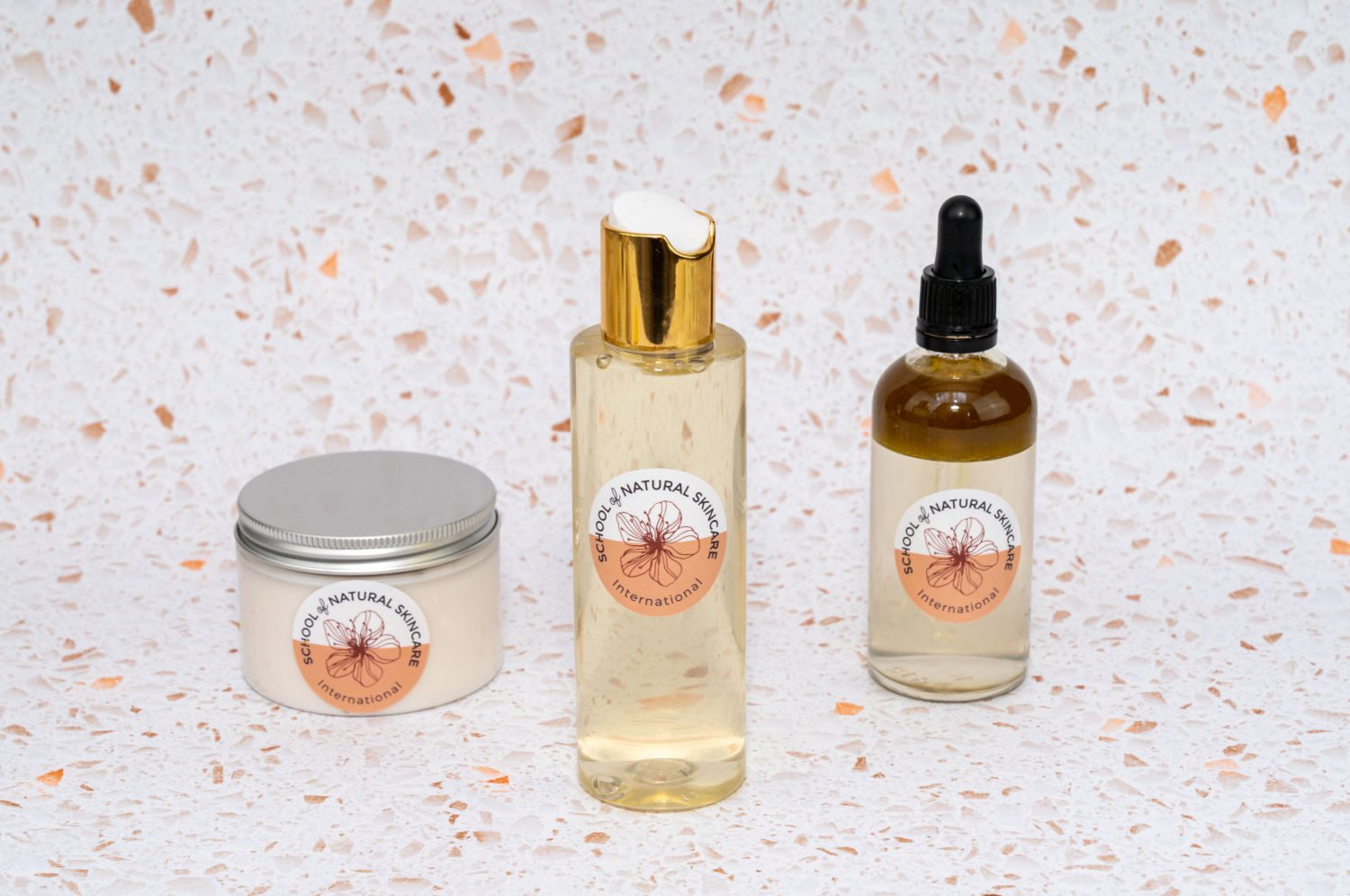
What are hydroxy acids?
Hydroxy acids are a category of compounds that act as chemical exfoliators for the skin. There are three main types of hydroxy acid: alpha hydroxy acids (AHAs), beta hydroxy acids (BHAs) and polyhydroxy acids (PHAs).
Chemical exfoliators are an alternative to physical exfoliants. They work by breaking down the bonds between dead skin cells that are present on the outer layer of the skin. Once the skin has been chemically exfoliated, smoother and brighter looking skin is revealed.
As exfoliation can cause skin irritation, these products are typically formulated with moisturizing ingredients (such as emollients), hydrating ingredients (such as humectants), and other skin soothing ingredients to help minimize any potential irritation.
What are the benefits of polyhydroxy acids?
Polyhydroxy acid is growing in popularity among natural cosmetic formulators, not only due to its skin benefits but because this ingredient is natural, derived from renewable sources and biowaste.
Sustainability is no doubt a high priority in your natural skincare ethos, just like in ours, so it is refreshing to know that by choosing this ingredient you are helping to build a more circular economy by creating a market for a waste product.
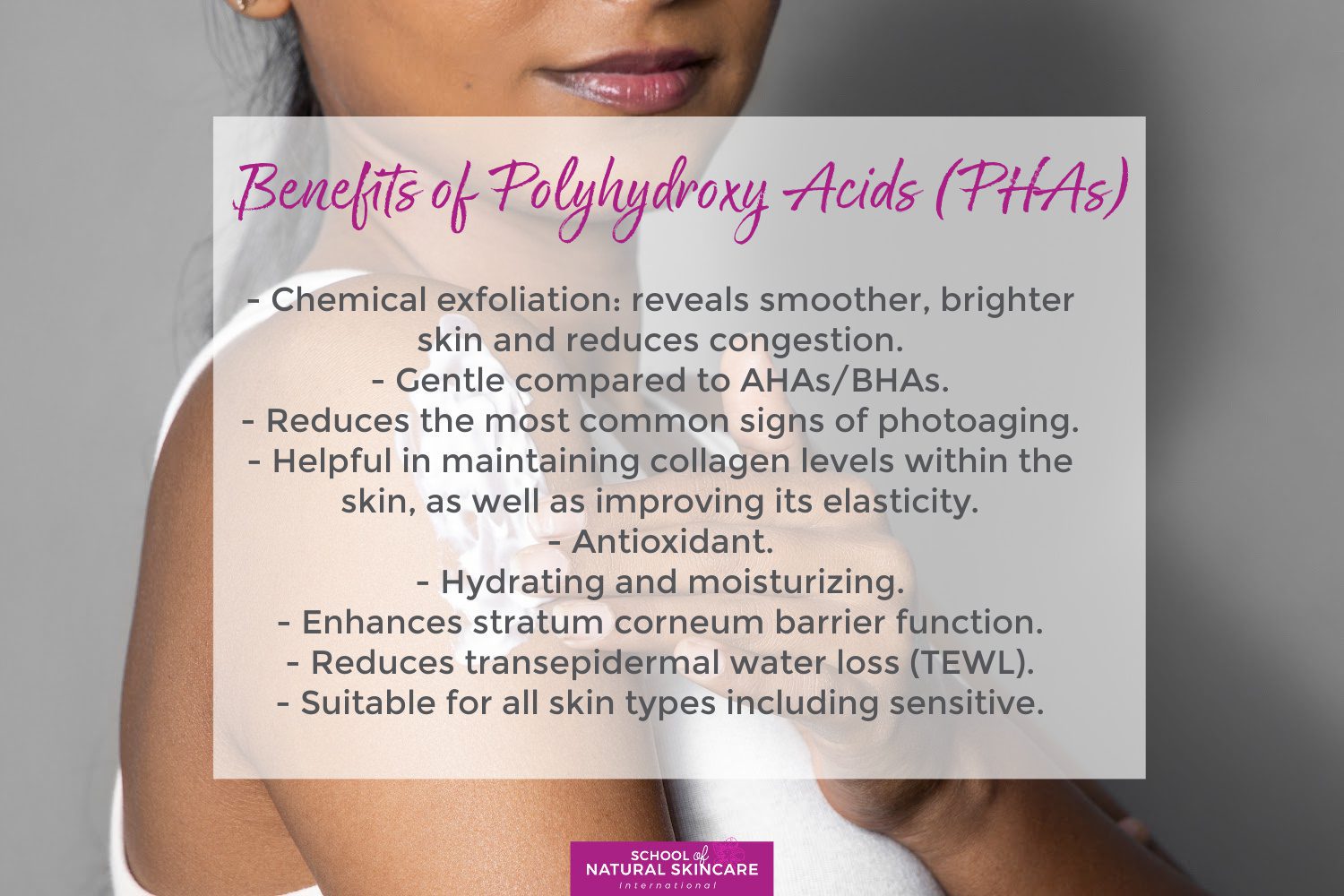
The most popular skin benefit of PHAs such as gluconolactone, is that they act as a chemical exfoliant and therefore reveal smoother, brighter skin and reduce congestion.
A big issue with using AHAs as chemical exfoliants is that they can cause irritation; however PHAs are increasingly popular due to being more gentle. PHAs are suitable for use on all skin types, including sensitive skin, and have been found to be suitable for clinically sensitive skin, too (such as rosacea and aptopic dermatitis).
PHAs also act as humectants and moisturizers for the skin. They are similar to AHAs in this function, but are thought to bring additional humectant and moisturizing properties, providing a range of skin benefits such as reducing transepidermal water loss and preventing chemical damage to the skin.
Researched on a range of skin tones and types, PHAs have shown a reduction in the most common signs of photoaging. The PHA gluconolactone has been found to protect skin from some of the damaging effects of UV radiation. It is helpful in maintaining collagen levels within the skin, as well as improving its elasticity and tone and reducing the appearance of sallowness.
How to formulate with polyhydroxy acids
It’s difficult to ignore such incredible benefits of PHAs, which is why many skincare brands are embracing this relatively new ingredient – and you could, too! They’re ideal homemade exfoliants.
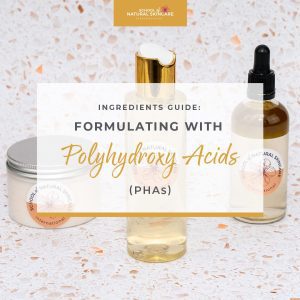
In the Natural Cosmetic Formulation Club, we have created a fantastic ingredients guide, Formulating with Polyhydroxy Acids (PHAs), which delves into the science behind this amazing ingredient; even deep down to its molecular structure!
If you unlock this guide, you will also have access to more detailed explanations of the similarities and differences between AHAs, BHAs and PHAs, as well as how to formulate with polyhydroxy acids.
You will learn about the most prominent polyhydroxy acid on the skincare market, as well as exploring skincare examples already available. Plus, there’s much, much more!
We give you three formulation examples to get a feel of how adaptive polyhydroxy acids are. We show you how this one ingredient can feature in a toner, a bi-phasic serum and a body moisturizer!
Why not make our AHA and PHA Toner; a gentle product that will help reduce congestion within the skin. Or formulate our PHA and Bakuchi Oil Bi-phasic Serum that helps reduce the appearance of hyperpigmentation and wrinkles. Perhaps you could create our PHA Body Moisturizer for smoother, brighter looking skin.
All of these ready-to-use formulations developed and tested by our Cosmetic Scientists are at the fingertips of Club members! Plus members can follow our detailed guidelines to formulate their own unique PHA products.
Join the Club today!
Simply check out our Natural Cosmetic Formulation Club to find out how you can join the Club, get access to Formulating with Polyhydroxy Acids (PHAs) and discover more exciting material that’s released on a regular basis.
If you have any questions, please email us at hello@schoolofnaturalskincare.com

